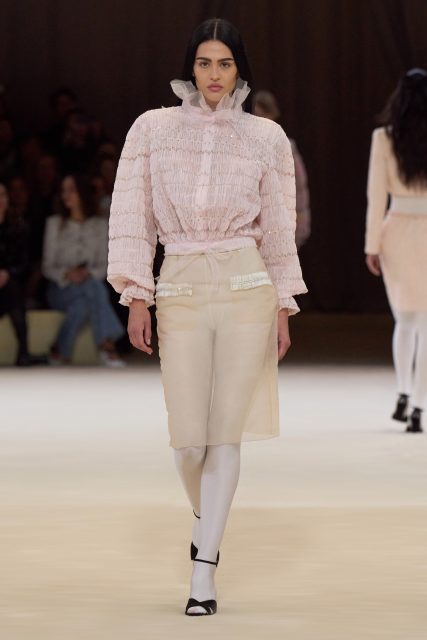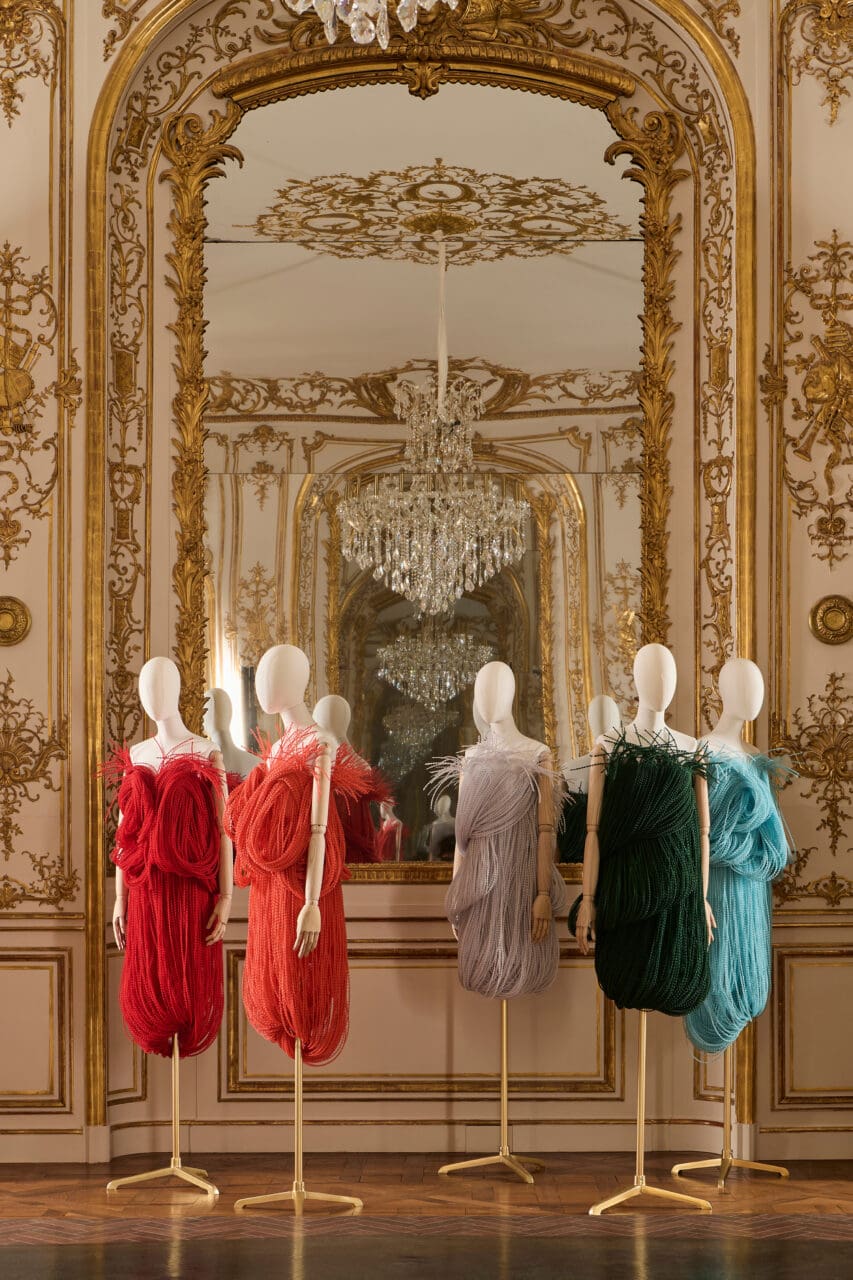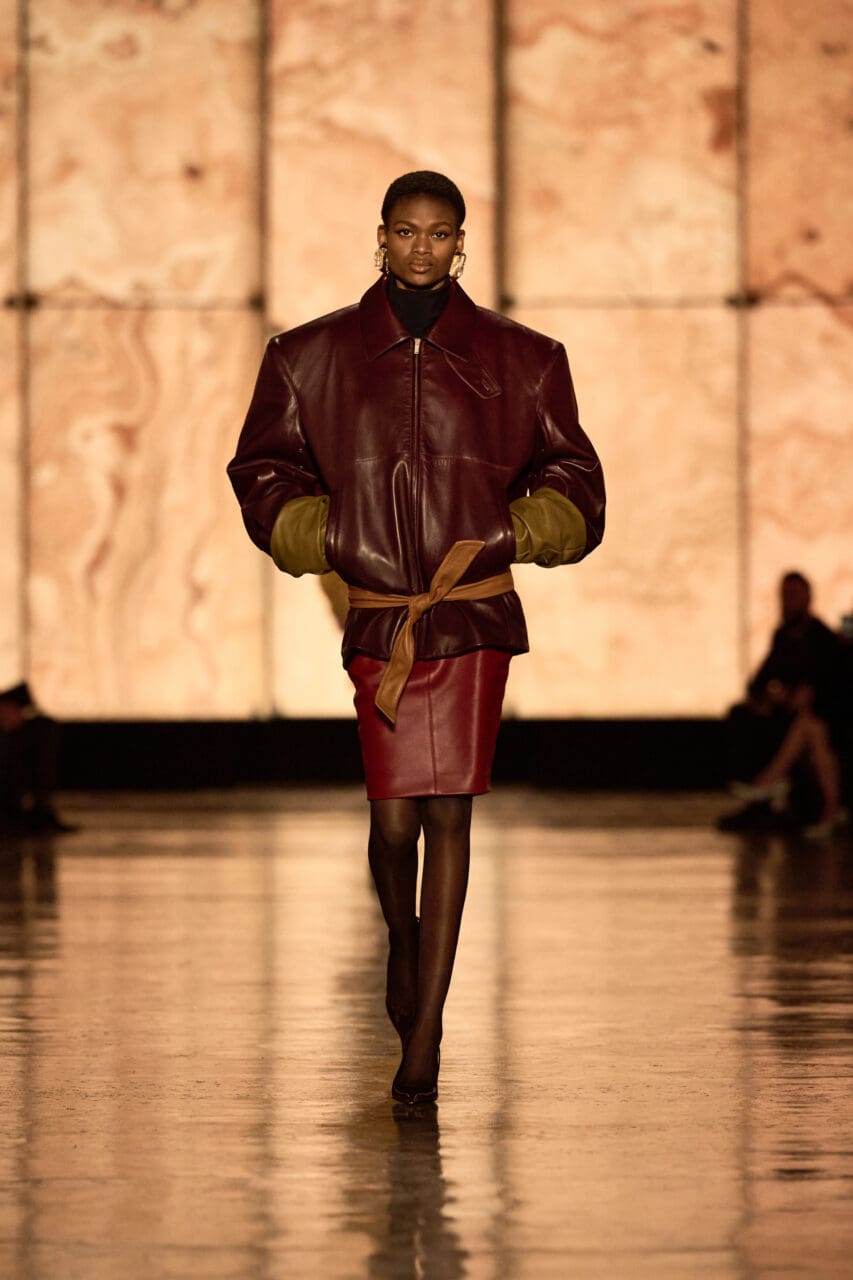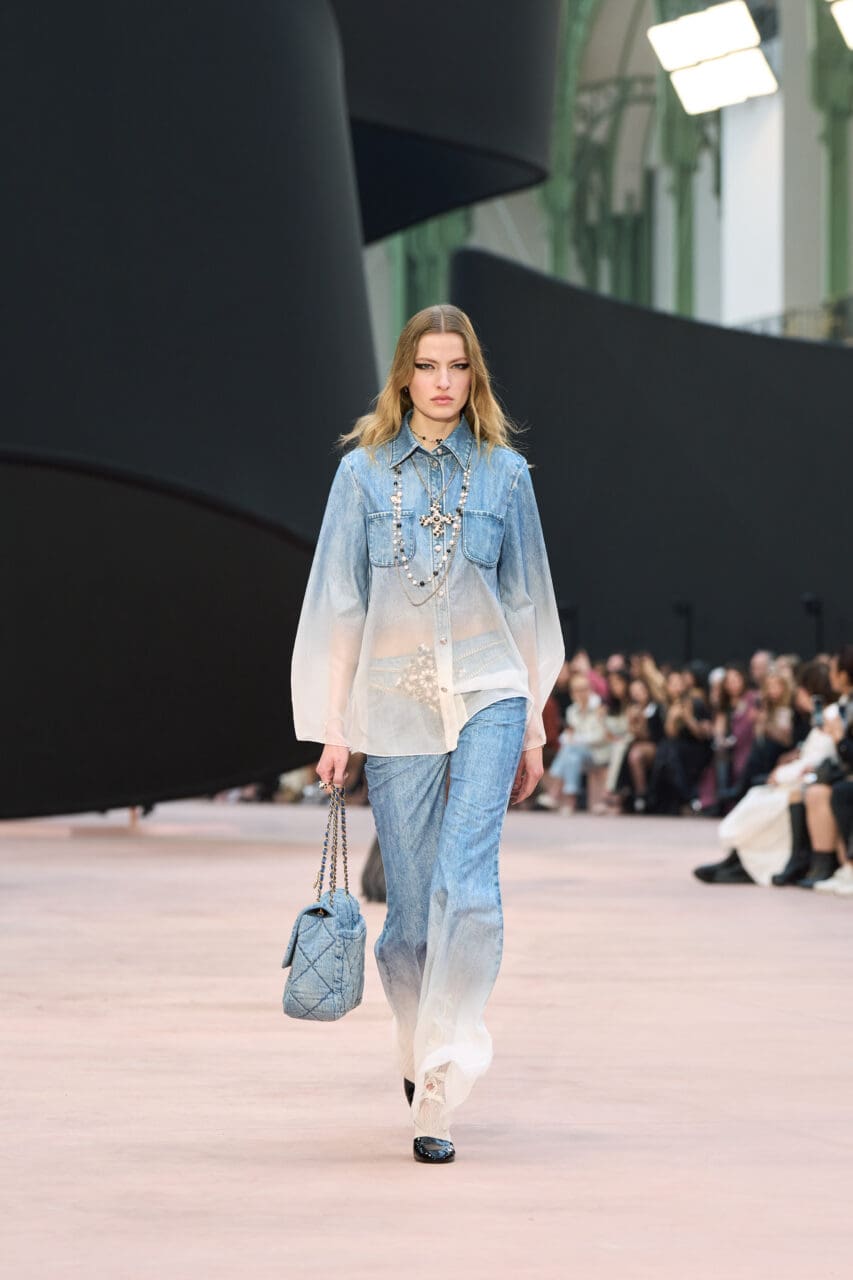Most designers tell stories; Simone Rocha deals in fairytales. That she’d find herself at Paris Haute Couture Week was, in this regard, inevitable. In craftsmanship and mythology, haute couture sets itself apart from ready-to-wear—and the Irish-Chinese Rocha, whose gothic clothes read like tapestries, seemed apt for the task.
The task being, of course, acting as Jean Paul Gaultier’s guest couturier for spring/summer 2024. Since presenting his final collection for the house in 2020, on its 50th birthday, Gaultier has invited a different designer each season to helm a collection under his name, fusing the codes of Jean Paul Gaultier with their own contemporary vision. Sacai’s Chitose Abe, Y/Project and Diesel’s Glenn Martens, Balmain’s Olivier Rousteing, and Haider Ackermann have lent their hands and eyes; today, Rocha followed Paco Rabanne’s Julien Dossena in showing 36 looks under the high ceilings of Gaultier’s Paris headquarters.
It is hard enough designing your own collection, and harder still to create a collection true to two imaginations. Gaultier, the enfant terrible of fashion, is versed in sex, subversion and provocation; Rocha’s approach to femininity is gentler, steeped in melancholy and modesty. What Rocha demonstrated was the unexpected concord between both points of view. “I wanted to make something that was attractive, provocative, playful, sensual, feminine and strong,” Rocha shared. “Haute couture is historical and romantic, and even some of my collections play on these qualities, so it’s about introducing modernity, reality, an almost scientific approach to this project, to push it forward for today.”
So she flung open the archives from the very first look: a semi-sheer, long-sleeved dress with jutting panniers that referenced a coat from Jean Paul Gaultier’s ‘Les Tatouages’ show of spring 1994. On the bodice and cuffs were embroidered mirroring motifs: Eyes of Providence instead of breast pockets, and snakes writhing along the hem. The serpents reappeared on shift dress, worming over shoulders, but this was a coalescence from Rocha; the symbols spoke to ‘Les Tatouages’, but a diamanté bustier and ribbons, shell cups stuffed with taffeta, referenced Gaultier’s couture for spring 2001. “His love of the breast and the hip and the female form,” Rocha explained later of the collection’s bustles. “[It was about] exploring that and harnessing it.”
Part of this Dionysian focus on the body—fresh territory for Rocha—saw the designer reinterpret one of Gaultier’s most iconic silhouettes: the conical bra. The new look for the shape that Madonna enshrined on tour for Blonde Ambition? Rose thorns, or maybe devil horns, curving up from the bosom. “I love it,” exclaimed Gaultier of Rocha’s iteration post-show, “it’s not as aggressive as mine. It’s more feminine in a way because it’s more rounded.” It poked out, white, exposed above a pink satin slip laced on the side with loose ribbons—a detail replicated also in Gaultier’s spring 2001 couture—and returned in a corseted crimson gown, tulle spurting from the waist like blood.
Red, as you may know, is a Rocha signature. At Central Saint Martins, she found inspiration in a tradition from the Aran Isles, where women would dye their petticoats red, and wear them like veils at funeral processions. Here, and in all her previous collections, the sanguineous effect of a gown or satin gloves, trailing ribbon, is intentional. It is precisely this sense of the macabre that makes Rocha’s stance on femininity so compelling. Do her women grip roses intended for suitors, or death? In a Brontean way, the answer might very well be both.
You needn’t be well-versed in Gaultier to spot the other ways Rocha drew from his archive. She spun the stripes of a marinière from black ribbon and topped ruffled twinsets with sailor caps; both were silhouettes Gaultier immortalised in 1983 with ‘L’Homme Objet’, his first ready-to-wear menswear collection. But the elements that were less obvious and visible to the eye were also significant—the fruits of Rocha’s access to an atelier of petites mains. Note the lacrimal crystals, dotting skirts like barnacles, or beads of dew; heed the porcelain flowers growing across the front of a calico corset. One dress—bell-shaped, and crafted from a silver-coated Irish lace—was crocheted using a technique historically favoured by both Rocha and Gaultier.
This was the game Rocha had set in motion, of reveal and conceal. Some looks, like her lace dress, bared the body underneath; others, like a bishop-sleeved coat and gown, were swaddling, protective. “I wanted to play on this idea of restriction and release,” she said. Hence clothes that nipped and flared, fading in and out of opacity.
Rocha closed her show, per convention, with a bride. She was ghostly in trapezoid lace, veiled in the image of Gaultier’s bride from spring 1998 couture. It was all the more fitting, however, considering Rocha’s title for the collection. Her previous ready-to-wear capsule she’d dubbed ‘The Dress Rehearsal’; autumn/winter ’24/’25 she plans to call ‘The Wake’. Jean Paul Gaultier haute couture spring/summer 2024? Why, naturally, it’s ‘The Wedding’. We join an enamoured crowd when we say, “I do.”
Editor
Gladys LaiCredit
Lead image: Isidore Montag / Gorunway.com








